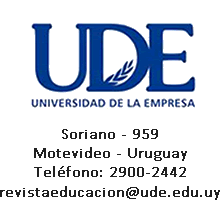The "maker" in mathematics teaching: a new approach to gaining new knowledge
Keywords:
Maker, Método ensino, TransdisciplinaridadeAbstract
An important trend has emerged in recent years in countries such as the United States and has gained strength throughout Brazil. It is about the implementation of a practical teaching model, known as maker teaching, which aims to make the student the protagonist of his learning and autonomous to the point of consolidating knowledge through dynamic and meaningful classes and, considered by many researchers, as a weapon against traditionalism. in schools (Gavassa, 2020). This model also aims to stimulate each person's ability to explore existing technologies and discover multiple disciplines in a kind of reverse research, where the student realizes the importance of mathematical knowledge, for example, while building an object (Paula, Oliveira; Martins, 2019). The research project under discussion aimed to make use of the "maker" culture and transdisciplinarity to investigate whether the relationship between mathematics and other sciences, and with the concrete, makes them more attractive for students who do not have an affinity with them, and to Analyze whether the 'maker' has the potential that editorials and courses focused on education have preached, using an application in the classroom to observe the main challenges that arise during the process.
Downloads
Additional Files
Published
How to Cite
Issue
Section
License
Copyright (c) 2023 Stephany Fernando de Araujo Flôres Mendoça

This work is licensed under a Creative Commons Attribution 4.0 International License.
Política para revistas de acceso abierto
Los autores/as que publiquen en esta revista aceptan las siguientes condiciones:
a. Los autores/as conservan los derechos de autor y ceden a la revista el derecho de la primera publicación, con el trabajo registrado con la licencia de atribución de Creative Commons (CC-BY), que permite a terceros utilizar lo publicado siempre que mencionen la autoría del trabajo y a la primera publicación en esta revista.
b. Los autores/as pueden realizar otros acuerdos contractuales independientes y adicionales para la distribución no exclusiva de la versión del artículo publicado en esta revista (p. ej., incluirlo en un repositorio institucional o publicarlo en un libro) siempre que indiquen claramente que el trabajo se publicó por primera vez en esta revista.






















